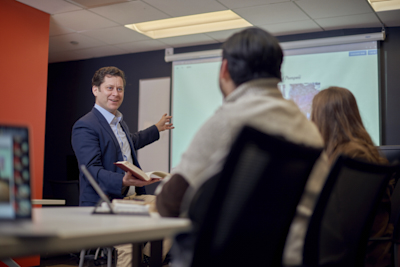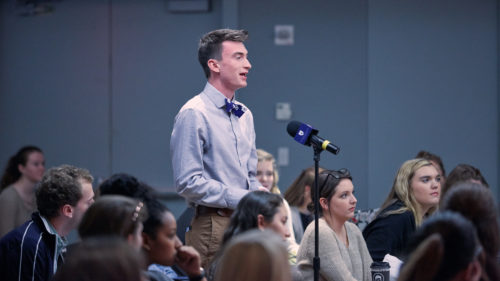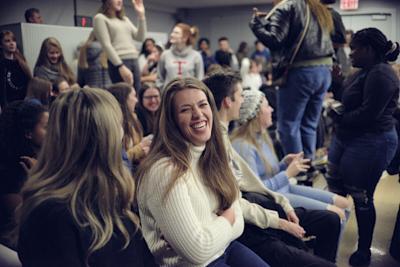Footprints in the Sand: Students Explore the Historical and Modern State of Israel
For 10 days, King's students explored the biblical sites of historic Israel while learning about Jewish-Christian relations and the modern Israeli-Palestinian conflict.
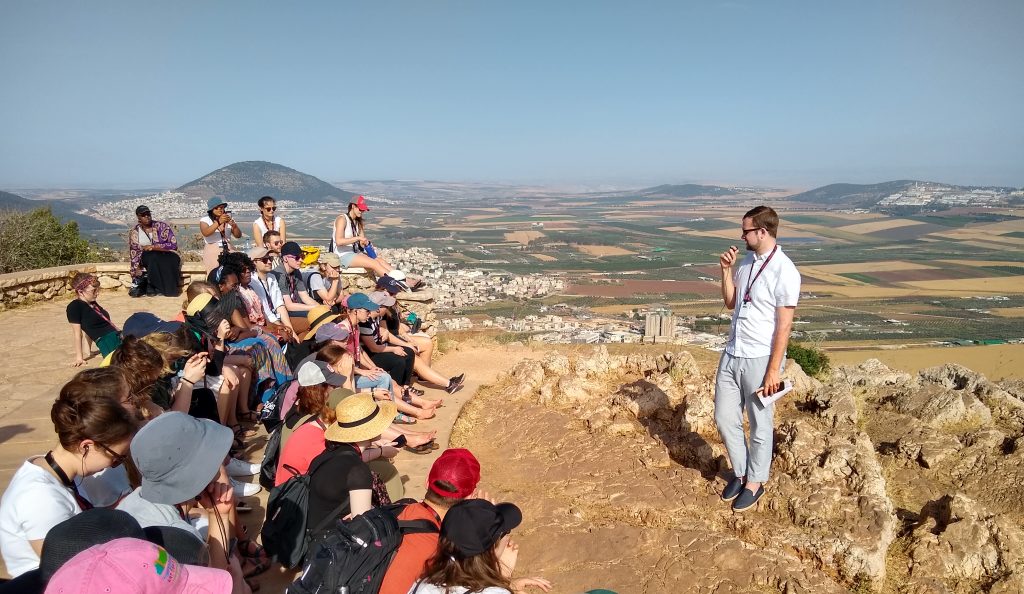
Forty-two King’s students made a pilgrimage to Israel on May 19, beginning a 10-day exploration of the modern State of Israel and the historic landscape of the Old and New Testaments.
Headed by assistant professor of biblical studies Dr. Benjamin White and assistant professor of finance Dr. Dami Kabiawu, the King’s group spent one day in Tel Aviv and two in Jerusalem, with day excursions to the Sea of Galilee, Masada, the Dead Sea, the border of the Gaza Strip, and other sites of current and biblical significance. With insight provided by their Israeli tour guide and biblical context provided by White, the King’s students discovered how the archaeology and geography of each location fit into the larger biblical narrative. A second bus with five other King’s students, led by Passages fellow Jenalynn Weed (MCA ’19) and Megan Dishman as the staff advisor, followed a similar itinerary a few days after the first group began their journey.
Abigail Smith (PPE Dec. ’19), a student leader on the trip, described one highlight, Mount Precipice, as a vantage point of the whole biblical landscape. Mount Precipice is the hilltop in Luke 4 where an angry crowd tried to throw Jesus over a cliff. The overlook also provides a view of Mount Tabor, the traditional site of the transfiguration, Mount Gilboa, where King Saul died (1 Samuel 29), Mount Carmel, where Elijah defeated the prophets of Baal (1 Kings 8), and the entire Jezreel Valley, where Gideon and the Israelites triumphed over the Midianites (Judges 6).
The students also visited Ein Gedi, a nature reserve with craggy cliffs, springs, palm trees, and mountain goats. It was here that David hid from King Saul and spared his life in 1 Samuel 24. A boat ride on the Sea of Galilee and a swim in the Dead Sea rounded out the touristy activities on the itinerary.
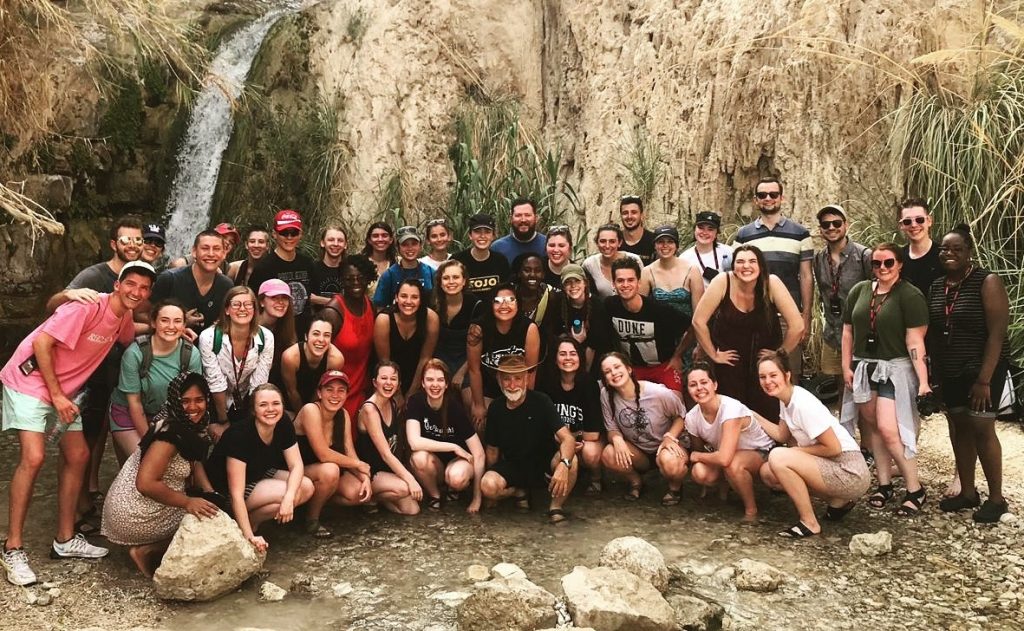
At each site, students were encouraged not only to engage as tourists but to contemplate, pray, and open their hearts and minds to understand the enduring relevance of God’s grace and instruction. “Walking down the Mount of Olives into Gethsemane and then into Jerusalem,” White reflected, “I kept thinking about how Jesus walked a similar route 2000 years ago—but rather than a tourist excursion, he was walking to his death. That haunted me. I looked at different alleyways and thought about how he could have turned around. He could have fled. But then it dawned on me: the closer he got to his death, the closer he was to his resurrection.”
The trip was organized through partnerships with Passages Israel and the Philos Project, organizations that promote positive Christian engagement in the Middle East. For that reason, in addition to touring the physical landscape, students were exposed to the historical, religious, and political landscape of the Levant through a variety of lectures and panel discussions. One evening, Dr. Tal Becker, a lead negotiator in the Annapolis peace talks and legal advisor of the Israeli Ministry of Foreign Affairs, presented arguments made by Israelis and Palestinians for their competing claims to the Holy Land. During another talk, Dr. Faydra Shapiro, an Orthodox Jew, shared how Jewish-Christian relations could improve if the groups knew more about each other.
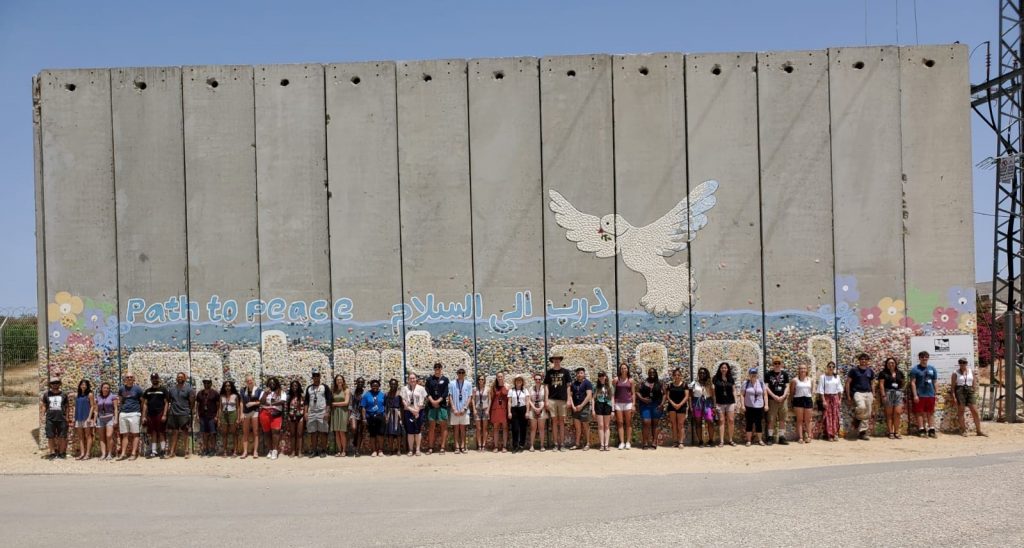
Smith reflected,
Passages is so much more than a normal travel experience. Students get to hear from a diverse variety of perspectives, be challenged by cultures and views dramatically different from their own, and reflect on their faith. They engage with politics, art, business, and religion, among other things. The ideas and experiences are well-suited as an extension of the King’s curriculum. It’s a challenge, in the ideas and the full days with late nights, but it opens people’s eyes and minds in a way that changes their lives.
All student participants will continue the conversation about these difficult topics through their choice of post-trip engagement projects, such as compiling a photo portfolio, attending a Shabbat dinner in their local Jewish community, speaking as a guest lecturer about their experience, or beginning training to become a fellow and leader on future trips.
White concluded,
This trip is important because it engages both the historic and modern significance of Israel. Students deepen their faith by seeing rather than merely reading about the land in which Jesus lived. They also get to meet Israelis, whether Jews, Christians, or Muslims, and even venture into the West Bank to learn about the conflict between Israel and Palestine. They walk away with a greater appreciation for why the Romans fought for this land, how the first Christians fit into that picture, and why various groups today lay claim to it. They also get to eat lots of hummus.

